Illuminate Your Garden: The Eco-Friendly Appeal and Practical Guide to Small-Scale Solar Lighting
Small-scale solar lights are becoming the ideal choice for illuminating garden pathways. Not only are they eco-friendly and energy-efficient, but they also enhance your garden’s nighttime beauty and safety. With technological advancements in 2025 and growing consumer focus on sustainable living, the solar lighting market is rapidly expanding. This article delves into the 2025 industry trends for solar lights, provides purchasing advice, outlines installation steps, and offers a detailed cost analysis, including U.S. state-specific incentives, to help you select the perfect lighting solution for your garden.

Industry Trends: The Future of Solar Lighting in 2025
Amid the global shift toward clean energy and the drive for “dual carbon” goals (carbon peak and neutrality), solar lighting, as a key segment of green illumination, is experiencing unprecedented growth. In 2025, advancements in photovoltaic technology, smart controls, and expanded applications are shaping the industry. This section analyzes the future of solar lighting through three dimensions: technological innovation, application expansion, and evolving market dynamics.
- Technological Innovation: Commercializing perovskite solar cells and flexible photovoltaic materials is accelerating, improving efficiency and durability.
- Application Expansion: Solar lighting moves beyond outdoor use into smart cities and off-grid communities.
- Market Dynamics: Leading companies are integrating supply chains, while emerging brands capture niche markets.
According to 2025 market reports from authoritative sources like the U.S. Department of Energy (DOE) and Statista, the solar garden lighting market is showcasing five prominent trends:
1. Rise of Smart Lighting Technology
With smart home ecosystems penetrating over 40% of U.S. households (Statista, 2025), smart solar lights are gaining traction. Consumers can adjust brightness, set timers, or change colors via platforms like Apple HomeKit, Amazon Alexa, or Google Home. Hevilite’s 2025 report highlights that integration with systems like Nest thermostats and Ring security devices enhances convenience and reduces energy waste by 15-20% through automation, aligning with the demand for smart living.
2. Sustainability and Energy-Efficient Design
Spurred by the Inflation Reduction Act’s (IRA) 30% tax credit for clean energy products, solar light sales surged 42% year-over-year (DOE, 2025). LED technology delivers 150 lumens per watt and lifespans up to 50,000 hours. Fact.MR’s market report notes that solar lights are preferred in 80% of new homes in sun-rich regions like Arizona and California, and in grid-scarce areas like Alaska, due to zero electricity costs and no wiring needs. Next-generation lithium iron phosphate batteries ensure up to 72 hours of illumination during cloudy days.
3. Aesthetic and Functional Design
In 2025, solar lights blend seamlessly with U.S. architectural styles like Modern Farmhouse, Coastal, and Mid-Century Modern. Better Homes & Gardens’ 2025 trend report shows 75% of consumers prefer lights that integrate with landscapes, such as Cape Cod-style homes paired with vintage lantern-shaped ground lights or California villas with minimalist frosted glass fixtures. Solar string lights are a must-have for backyard parties, combining decor with functionality.
4. Enhanced Safety and Practicality
With over 1.2 million annual garden-related fall accidents (CDC data), demand for solar lights with PIR motion sensors is soaring. Hevilite notes that AI-enabled lights distinguish human from animal movement, reducing false triggers. Geofencing technology enables energy-saving modes when homeowners are away, activating lights upon return. In hurricane-prone areas like Florida, IP67-rated, wind-resistant (up to 120 mph) lights are essential for safety and theft prevention.
5. Long-Term Cost Efficiency
Although solar lights have a 30% higher initial cost than traditional lights, the National Renewable Energy Laboratory (NREL) estimates a 65% reduction in lifecycle costs, saving approximately $150 annually on electricity. Grand View Research predicts the U.S. residential outdoor lighting market will grow at a 10.1% CAGR from 2025-2030, with solar products capturing over 60% market share, driven by the Net Zero Energy Buildings Act and eco-friendly attributes.
Purchasing Advice: Choosing the Right Solar Lights
Selecting solar lights for garden pathways requires balancing functionality, durability, efficiency, and aesthetic fit. Here are practical tips tailored for the U.S. market:
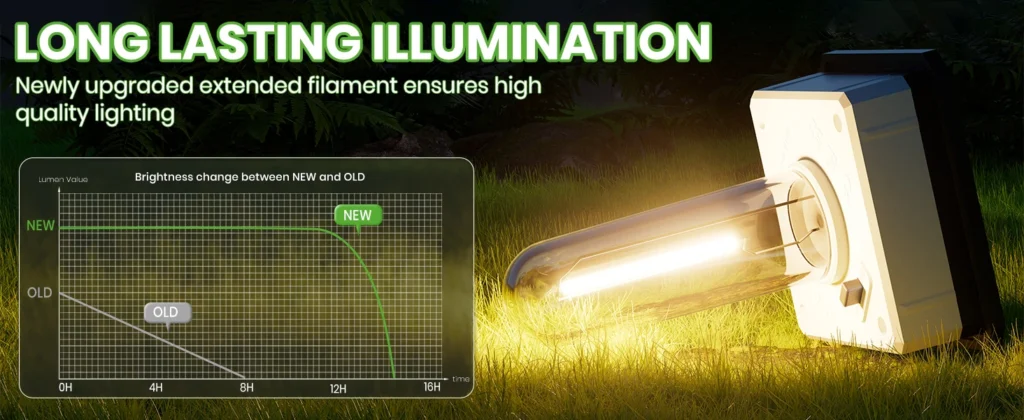
1. Determine the Light Type
- Landscape In-Ground Lights: Popular in American yards, brands like Hykolity and Bitpott offer ground lights secured with sturdy plastic stakes, ideal for illuminating pathways, flowerbeds, or yard edges. Their weather-resistant design suits Texas hurricane seasons or New England’s rain and snow.
- Deck & Step Lights: Widely used in Florida’s coastal villas or Colorado’s mountain homes, RAB Lighting and Philips Hue step lights provide soft illumination, reducing nighttime fall risks.
- String Lights: Twinkle Star and Brightech string lights are favorites for U.S. garden parties and holiday celebrations, perfect for pergolas, trees, or patios to create a warm, festive ambiance. For garden pathways, landscape in-ground lights are the optimal choice due to their easy installation and effective path illumination.
2. Check Waterproof Performance
Waterproofing is critical for garden and pathway lights exposed to rain and humidity. Opt for lights with IP65 or IP66 ratings. IP65 ensures complete dust protection and resistance to low-pressure water jets, while IP66 withstands heavy rain or coastal waves. Consumer Reports’ 2025 review emphasizes that high-quality solar lights must perform reliably in all weather conditions, with robust sealing at joints and charging ports to prevent short circuits and extend lifespan.
3. Focus on Battery Life and Illumination Duration
High-quality solar lights should provide 8-10 hours of illumination per charge. Check battery capacity (in mAh) and solar panel efficiency to ensure performance during overcast days. For example, Tom’s Guide recommends AMIR string lights, which offer up to 14 hours of illumination, maintaining reliability even in cloudy weather.
4. Choose a Suitable Design
Select lights that complement your garden’s aesthetic. Modern Farmhouse or minimalist designs (e.g., black or bronze finishes) are trending in 2025. Hevilite advises choosing neutral tones like black, white, gray, or bronze, which adapt to various styles and remain timeless through design changes.
5. Recommended Products
- Bitpott Solar Ground Lights: Affordable ($5 per light), sleek design, easy to install, ideal for budget-conscious buyers.
- Ring Solar Pathlight: Features smart functions like motion sensors and adjustable brightness ($35 per light), perfect for tech-savvy users.
- Linkind Smart Solar Spotlight SL5: Delivers 600 lumens, suitable for bright pathway lighting ($50 per light).
Installation Steps: Simple DIY Garden Illumination
Solar lights are easy to install, requiring no electrician, making them ideal for DIY enthusiasts. Here are the steps for installing ground lights:
- Select Location: Choose pathway spots with 6-8 hours of direct sunlight daily, avoiding tree shade or building obstructions.
- Prepare Ground: For hard soil, dig small holes or soften with water.
- Insert Stakes: Secure the light’s plastic stake into the ground, ensuring stability and vertical alignment.
- Adjust Angle: Position the light head to cover the pathway for optimal illumination.
- Test Functionality: Charge the light for a day in sunlight and check nighttime performance.
- Regular Maintenance: Clean solar panels monthly with a damp cloth to maintain efficiency.
Cost Analysis: Economic Benefits and U.S. State Incentives
Solar lights have a higher upfront cost than traditional lights but offer significant long-term savings. Below is a cost comparison for 10 lights in the U.S. market (assuming electricity costs $0.15/kWh):
| Cost Item | Traditional Lights | Solar Lights (Bitpott) | Solar Lights (Ring) |
|---|---|---|---|
| Initial Cost (10 units) | $30 | $50 | $350 |
| Annual Electricity Cost | $34.56 | $0 | $0 |
| 10-Year Total Cost | $375.60 | $50 | $350 |
Calculation Basis
- Traditional Lights: Each 10W light, used 8 hours daily, consumes 2.4 kWh monthly. Electricity cost: 2.4 × 12 × 0.15 = $4.32/year/light, or $34.56/year for 10 lights. Additional bulb replacements cost $2-5 per bulb annually.
- Solar Lights: Zero electricity costs, minimal maintenance (cleaning panels). Battery replacements (every 2-5 years) cost $1.5-3 per light, but modern designs extend battery life.
- U.S. Incentives: Federal and state policies reduce upfront costs, as detailed below.
U.S. State Incentives for Solar Lighting
U.S. states offer a variety of incentives to promote clean energy, including tax credits, rebates, and net metering policies. These measures significantly reduce the initial costs of solar lighting, particularly in sun-abundant regions. Below are the 2025 incentives for select states, based on the DSIRE database and other authoritative sources:
Federal Tax Credit (Nationwide): Under the Inflation Reduction Act (IRA), the Residential Clean Energy Credit provides a 30% federal tax credit for solar lighting systems installed between 2022 and 2032. This directly lowers upfront costs and shortens payback periods. File IRS Form 5695 to claim.
California:California’s net metering policy allows excess energy to be credited against utility bills. While primarily for solar photovoltaic systems, some utilities (e.g., Pacific Gas & Electric) offer small rebates ($5-10 per light) for solar lights. Additionally, residents benefit from property tax exemptions, ensuring solar installations do not increase property taxes.
Illinois: Illinois’ “Solar for All” program provides financing for low-income households, including small-scale solar lights. In 2024-2025, distributed generation projects in public schools can access up to 800 MW in subsidies. Net metering locks in full retail rate credits for existing users until January 1, 2025.
New York: New York City’s Property Tax Abatement, extended to 2035, covers up to 20% of solar installation costs. The state’s net metering policy provides bill credits for small solar systems.
Arizona: Arizona’s net metering policy (effective through 2025, though reform risks exist) allows bill credits for excess energy. Some utilities offer $5 rebates per solar light.
Massachusetts: Massachusetts provides full retail-rate net metering and local incentives (e.g., Hudson Light & Power photovoltaic program), offering $5-15 rebates per solar light.
Notes
- Policy Changes: In May 2025, the Trump administration proposed phasing out IRA clean energy tax credits, potentially affecting 2026 incentives. Install by late 2025 to secure the 30% federal credit.
- Application Process: Retain purchase and installation receipts and consult tax professionals to ensure accurate state and federal claims.
- Regional Variations: Policies vary by utility and locality; check the DSIRE database for updates.
Case Study
In California, a homeowner installed 10 Bitpott lights ($50), saving $15 via federal tax credit and $10 via local rebates, reducing costs to $25. Compared to traditional lights ($30 initial + $34.56 annual electricity), solar lights break even within a year and save over $300 in 10 years.
Conclusion: Brightening a Sustainable Future
Small-scale solar lights offer an eco-friendly, cost-effective, and aesthetically pleasing solution for U.S. garden pathways. 2025 industry trends highlight smart technology, sustainable design, and aesthetic innovation driving market growth. With robust federal and state support, such as New York and Massachusetts’ solar subsidies, consumers benefit from both environmental advantages and reduced costs through tax credits and rebates.
When selecting solar lights, focus on key performance metrics like waterproof ratings and battery life, and choose designs that complement your garden’s style. Simple installation steps enable you to create a safe, enchanting nighttime landscape. Cost analyses show that, despite higher initial investments, solar lights’ zero electricity costs, combined with abundant sunlight in certain U.S. regions, deliver significant long-term savings. Many brands also offer smart home-compatible products, allowing easy control via smartphones for a seamless blend of technology and sustainability.
Whether answering the call for green living or pursuing personalized garden aesthetics, solar lights are the ideal choice. Act now to select the right solar lights, illuminate America’s gardens, embrace sustainable living, and contribute to a greener future!


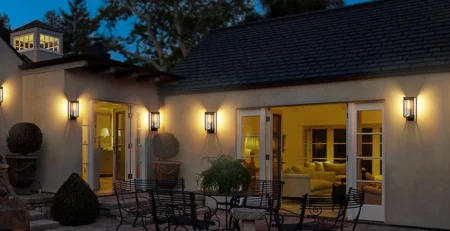
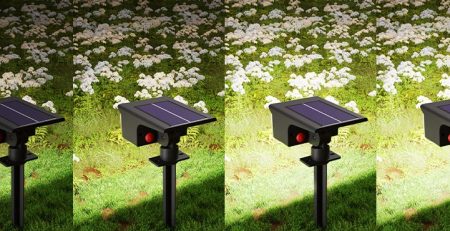




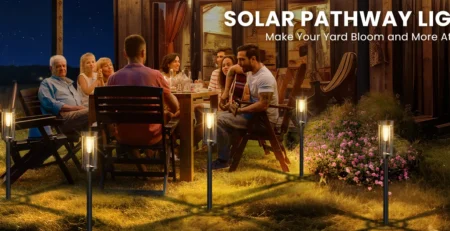
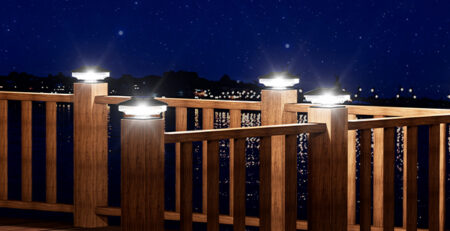
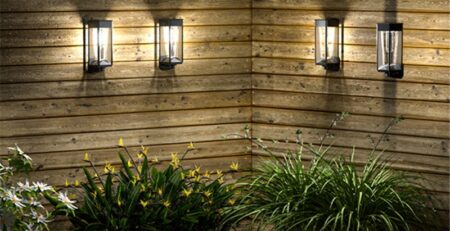
Leave a Reply